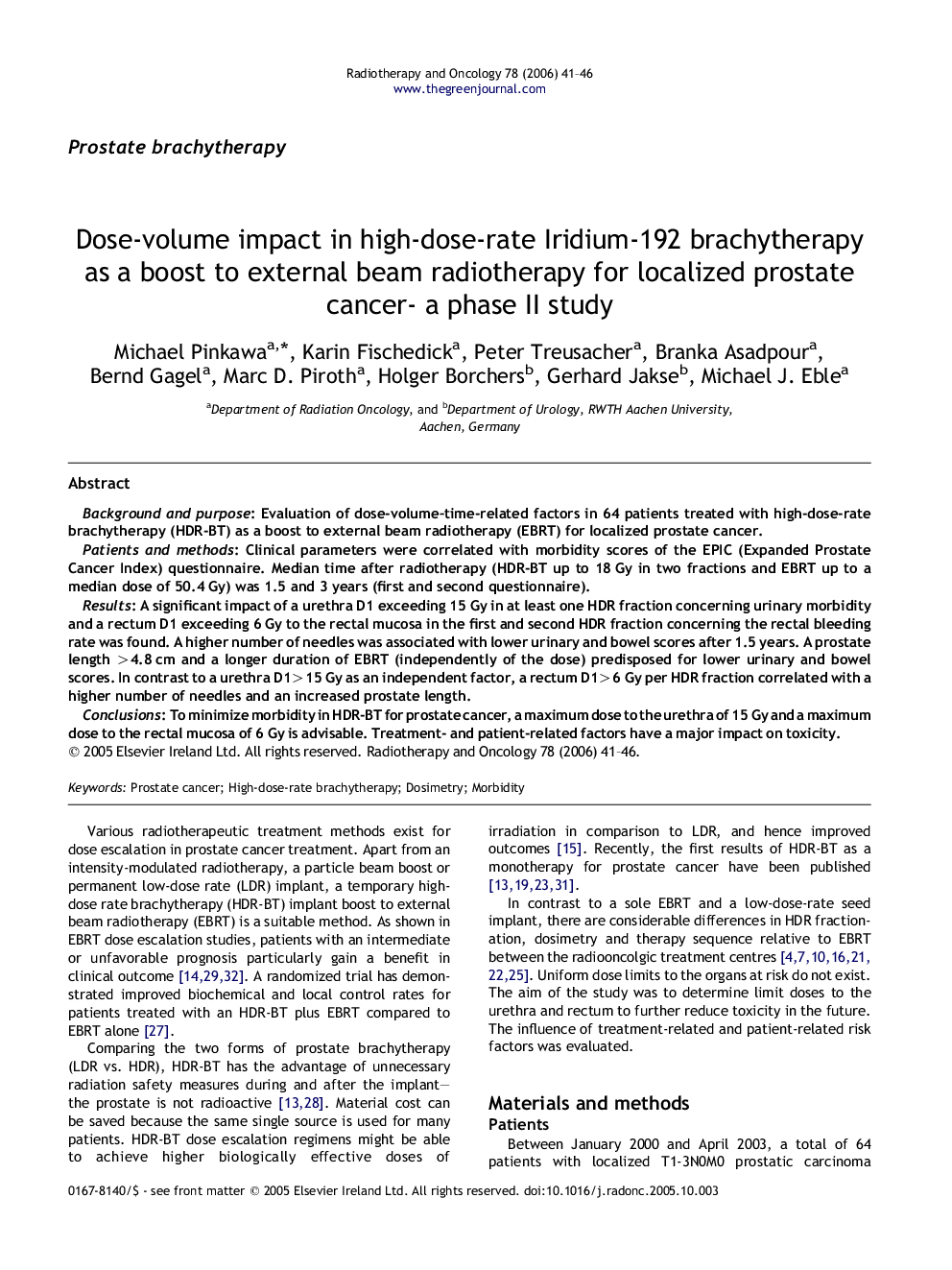| Article ID | Journal | Published Year | Pages | File Type |
|---|---|---|---|---|
| 2161263 | Radiotherapy and Oncology | 2006 | 6 Pages |
Background and purposeEvaluation of dose-volume–time-related factors in 64 patients treated with high-dose-rate brachytherapy (HDR-BT) as a boost to external beam radiotherapy (EBRT) for localized prostate cancer.Patients and methodsClinical parameters were correlated with morbidity scores of the EPIC (Expanded Prostate Cancer Index) questionnaire. Median time after radiotherapy (HDR-BT up to 18 Gy in two fractions and EBRT up to a median dose of 50.4 Gy) was 1.5 and 3 years (first and second questionnaire).ResultsA significant impact of a urethra D1 exceeding 15 Gy in at least one HDR fraction concerning urinary morbidity and a rectum D1 exceeding 6 Gy to the rectal mucosa in the first and second HDR fraction concerning the rectal bleeding rate was found. A higher number of needles was associated with lower urinary and bowel scores after 1.5 years. A prostate length >4.8 cm and a longer duration of EBRT (independently of the dose) predisposed for lower urinary and bowel scores. In contrast to a urethra D1>15 Gy as an independent factor, a rectum D1>6 Gy per HDR fraction correlated with a higher number of needles and an increased prostate length.ConclusionsTo minimize morbidity in HDR-BT for prostate cancer, a maximum dose to the urethra of 15 Gy and a maximum dose to the rectal mucosa of 6 Gy is advisable. Treatment- and patient-related factors have a major impact on toxicity.
